一、题目:
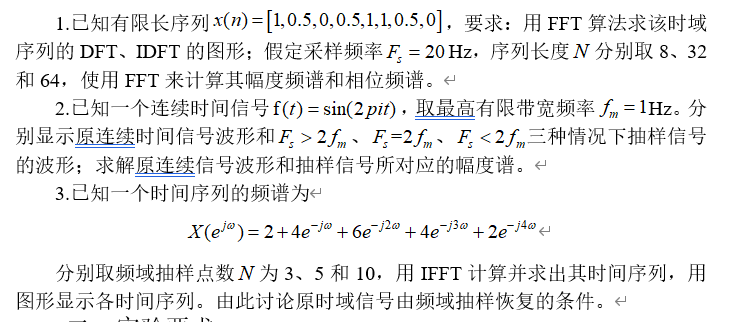
二、实验要求:
1、绘制图形时,尽量选用已经提供的函数。
2、所有的图形,需要加上横坐标、纵坐标以及标题的说明。
3、将设计的程序保存为脚本文件,在实验报告中,需写出程序语句。
4、Matlab程序中,需要为每段语句添加说明,说清每段的任务是什么,其中语句执行功能是什么
三、评分标准:
- 用FFT计算其幅度频谱和相位频谱准确;(3*8=24)
- 抽样信号的波形计算正确;(3*6=18)
- 原连续信号波形和抽样信号所对应的幅度谱计算正确;(3*8=24)
- 用IFFT计算时间序列正确;(3*8=24)
- 图形横坐标、纵坐标以及标题的说明清晰;(5)
- 程序代码注释清晰。(5)
1.% 已知序列
x = [1, 0.5, 0, 0.5, 1, 1, 0.5, 0];
% 计算FFT
X = fft(x);
% 计算IDFT
x_reconstructed = ifft(X);
% 时域序列的DFT图形
figure;
subplot(3, 1, 1);
stem(0:length(x)-1, x);
title('DFT时域序列 x(n)');
xlabel('n');
ylabel('Amplitude');
% 幅度频谱图形
subplot(3, 1, 2);
stem(0:length(X)-1, abs(X));
title('幅度频谱');
xlabel('Frequency Bin');
ylabel('Magnitude');
% 相位频谱图形
subplot(3, 1, 3);
stem(0:length(X)-1, angle(X));
title('相位频谱');
xlabel('Frequency Bin');
ylabel('Phase (radians)');
% IDFT图形
figure;
stem(0:length(x_reconstructed)-1, real(x_reconstructed));
title('IDFT 时域序列');
xlabel('n');
ylabel('Amplitude');
% 已知序列
x = [1, 0.5, 0, 0.5, 1, 1, 0.5, 0];
% 采样频率和序列长度
Fs = 20; % Hz
N_values = [8, 32, 64];
for N = N_values
% 计算FFT
X = fft(x, N);
% 计算幅度谱和相位谱
magnitude_spectrum = abs(X);
phase_spectrum = angle(X);
% 幅度频谱图形
figure;
subplot(2, 1, 1);
stem((0:N-1)*(Fs/N), magnitude_spectrum);
title(['幅度频谱(N = ' num2str(N) ')']);
xlabel('Frequency (Hz)');
ylabel('Magnitude');
% 相位频谱图形
subplot(2, 1, 2);
stem((0:N-1)*(Fs/N), phase_spectrum);
title(['相位频谱(N = ' num2str(N) ')']);
xlabel('Frequency (Hz)');
ylabel('Phase (radians)');
end
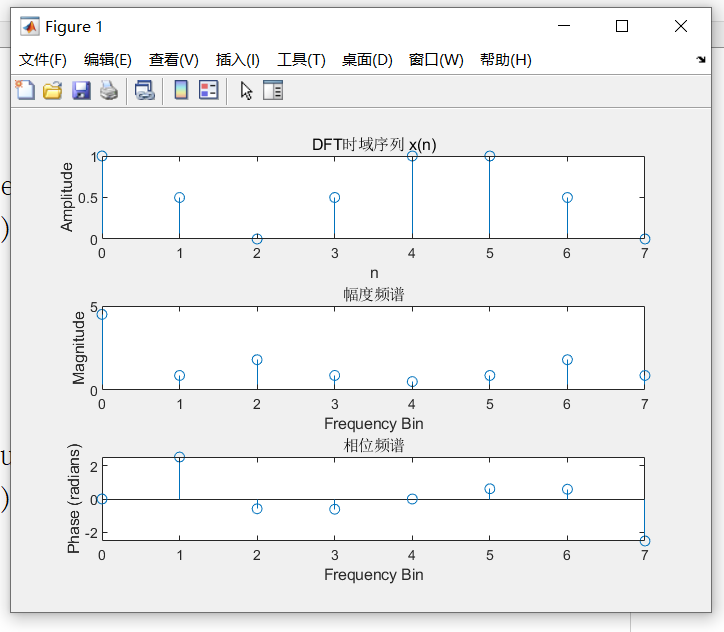
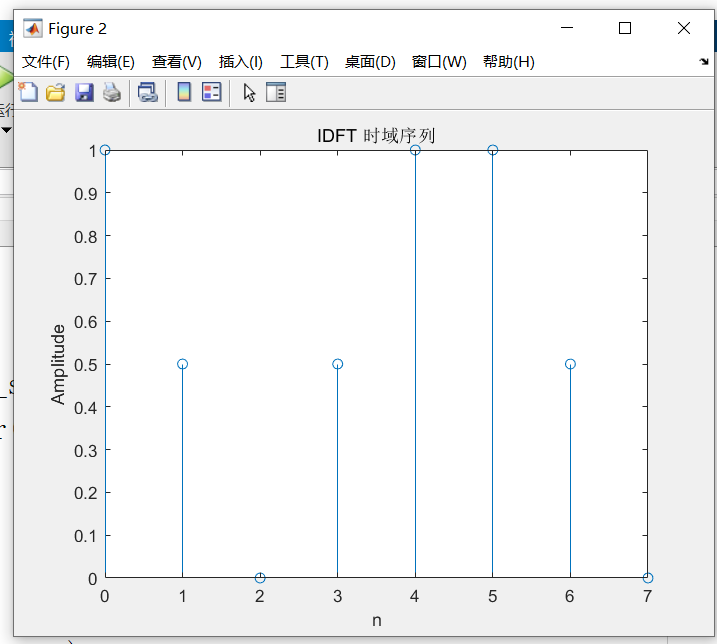
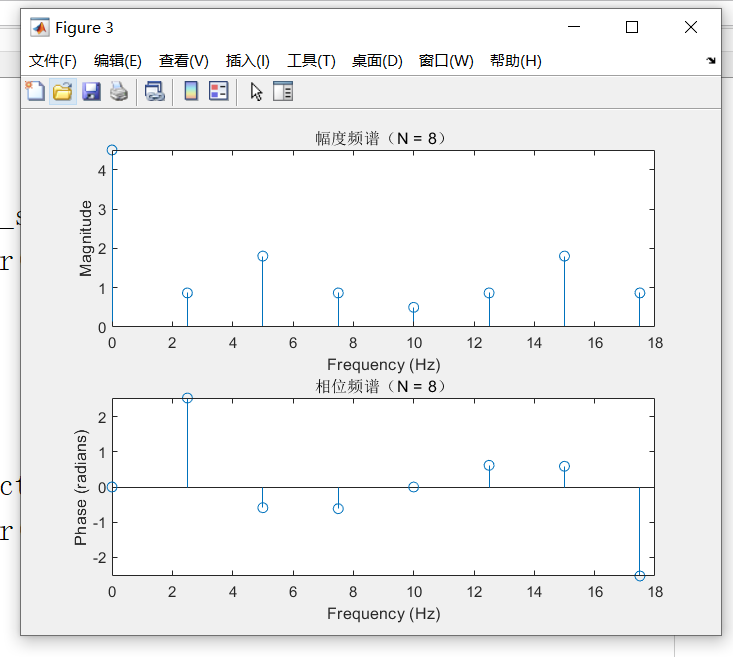
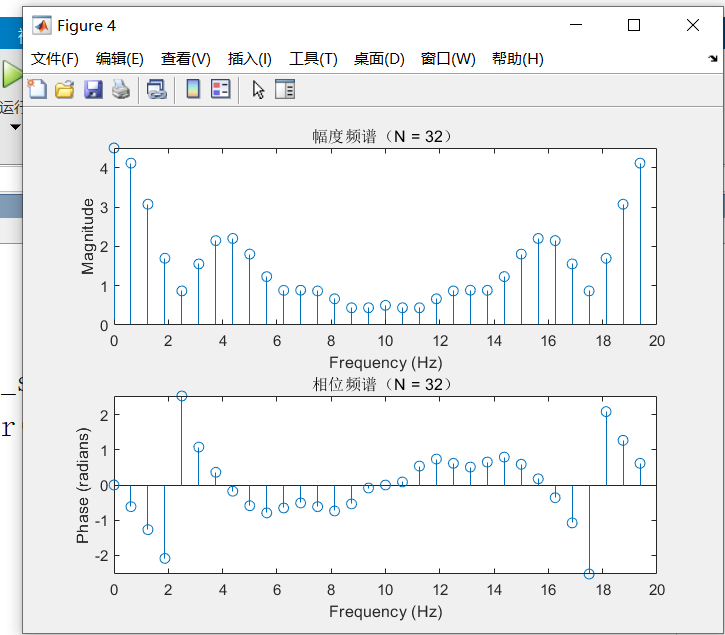
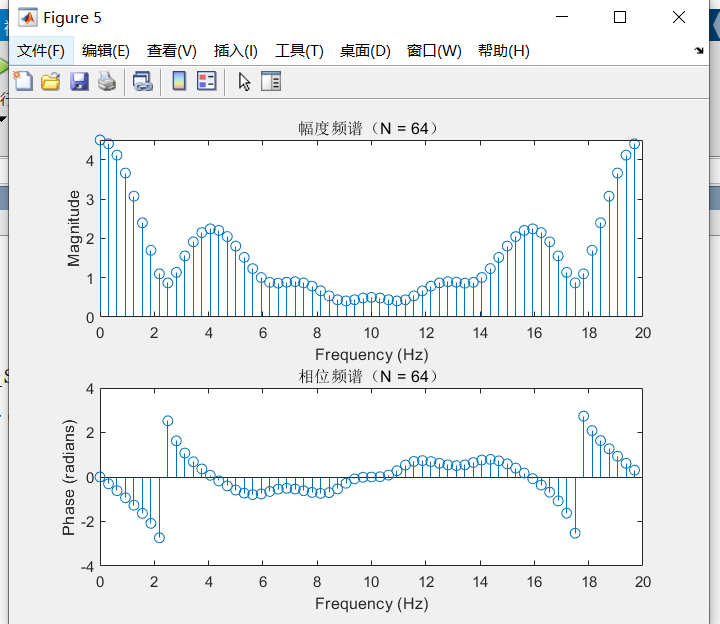
2.% 已知连续时间信号
fm = 1; % Hz,最高有限带宽频率
t_continuous = -1:0.001:1; % 时间范围为 -1 到 1 秒,取足够细的时间步长
f_continuous = sin(2*pi*fm*t_continuous);
% 抽样频率
Fs_values = [2.5*fm, 2*fm, 0.5*fm];
figure;
for i = 1:length(Fs_values)
Fs = Fs_values(i);
Ts = 1/Fs;
% 抽样时间
t_sampled = -1:Ts:1;
% 抽样信号波形
f_sampled = sin(2*pi*fm*t_sampled);
% 绘制原连续时间信号波形
subplot(length(Fs_values), 1, i);
plot(t_continuous, f_continuous, 'b-', 'LineWidth', 1.5);
hold on;
% 绘制抽样信号波形
stem(t_sampled, f_sampled, 'r-', 'LineWidth', 1.5, 'MarkerSize', 6);
title(['抽样频率 Fs = ' num2str(Fs) ' Hz']);
xlabel('Time (s)');
ylabel('Amplitude');
legend('原连续时间信号', '抽样信号');
hold off;
end
% 已知连续时间信号
fm = 1; % Hz,最高有限带宽频率
t_continuous = -1:0.001:1; % 时间范围为 -1 到 1 秒,取足够细的时间步长
f_continuous = sin(2*pi*fm*t_continuous);
% 抽样频率
Fs = 2.5*fm; % 选择一个抽样频率
% 抽样时间
Ts = 1/Fs;
t_sampled = -1:Ts:1;
% 抽样信号波形
f_sampled = sin(2*pi*fm*t_sampled);
% 计算原连续信号的幅度谱
f_continuous_spectrum = abs(fft(f_continuous));
frequencies_continuous = linspace(0, 1/(2*mean(diff(t_continuous))), length(t_continuous)/2);
% 计算抽样信号的幅度谱
f_sampled_spectrum = abs(fft(f_sampled));
frequencies_sampled = linspace(0, Fs, length(t_sampled)/2);
% 绘制原连续信号的幅度谱
figure;
subplot(2, 1, 1);
plot(frequencies_continuous, 2/length(t_continuous) * f_continuous_spectrum(1:length(t_continuous)/2), 'b-', 'LineWidth', 1.5);
title('原连续信号幅度谱');
xlabel('Frequency (Hz)');
ylabel('Magnitude');
% 绘制抽样信号的幅度谱
subplot(2, 1, 2);
stem(frequencies_sampled, 2/length(t_sampled) * f_sampled_spectrum(1:length(t_sampled)/2), 'r-', 'LineWidth', 1.5, 'MarkerSize', 6);
title('抽样信号幅度谱');
xlabel('Frequency (Hz)');
ylabel('Magnitude');
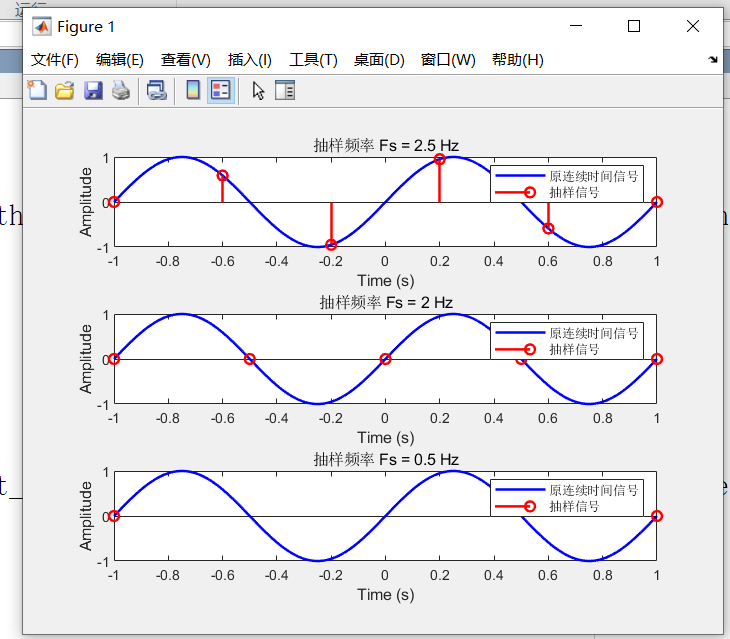
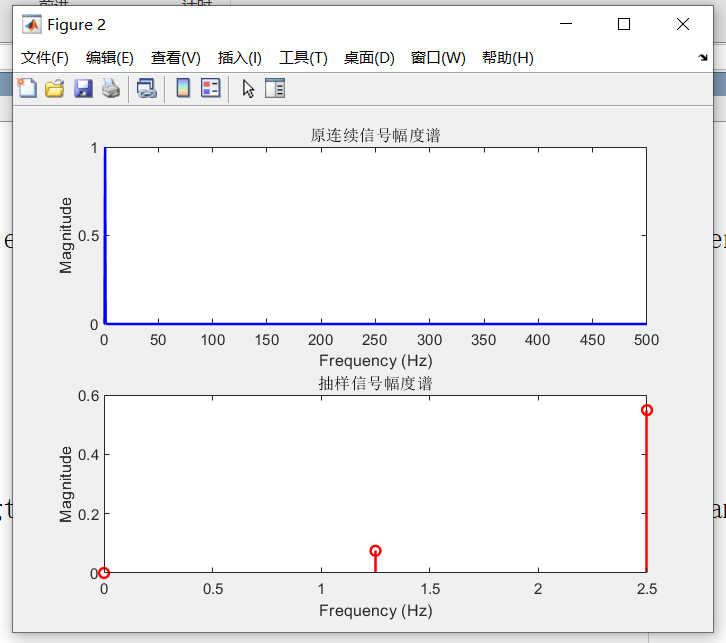
3.% 给定频谱
w = linspace(0, 2*pi, 1000); % 频率范围
X_w = 2 + 4*exp(-1j*w) + 6*exp(-2j*w) + 4*exp(-3j*w) + 2*exp(-4j*w);
% 频域抽样点数
N_values = [3, 5, 10];
figure;
for i = 1:length(N_values)
N = N_values(i);
% 选择前N个频谱样本
X_N = X_w(1:N);
% 使用IFFT计算时域信号
x_n = ifft(X_N, N);
% 绘制时域信号波形
subplot(length(N_values), 1, i);
stem(0:N-1, real(x_n), 'r-', 'LineWidth', 1.5, 'MarkerSize', 6);
title(['时域信号 N = ' num2str(N)]);
xlabel('n');
ylabel('Amplitude');
end
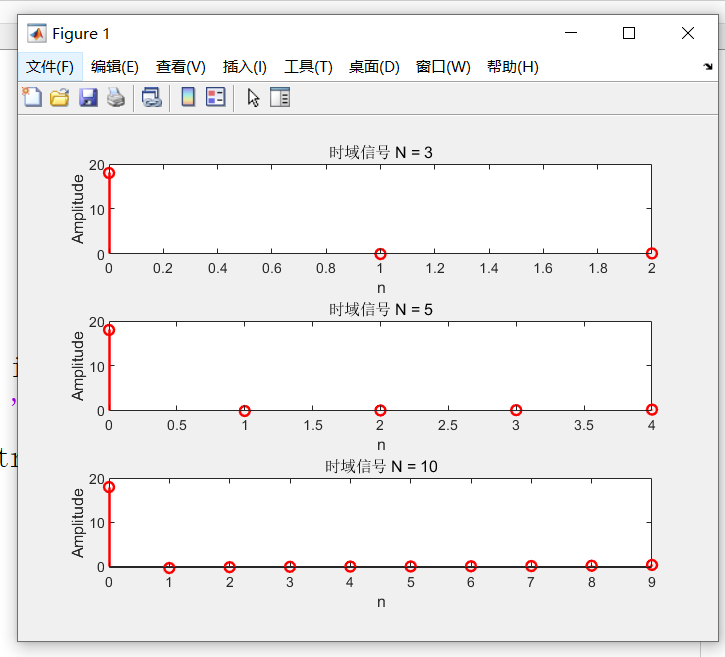




![[蓝桥杯 2017 国 C] 合根植物](http://pic.xiahunao.cn/[蓝桥杯 2017 国 C] 合根植物)








![[技术闲聊]我对电路设计的理解(五)-如何获取datasheet](http://pic.xiahunao.cn/[技术闲聊]我对电路设计的理解(五)-如何获取datasheet)





